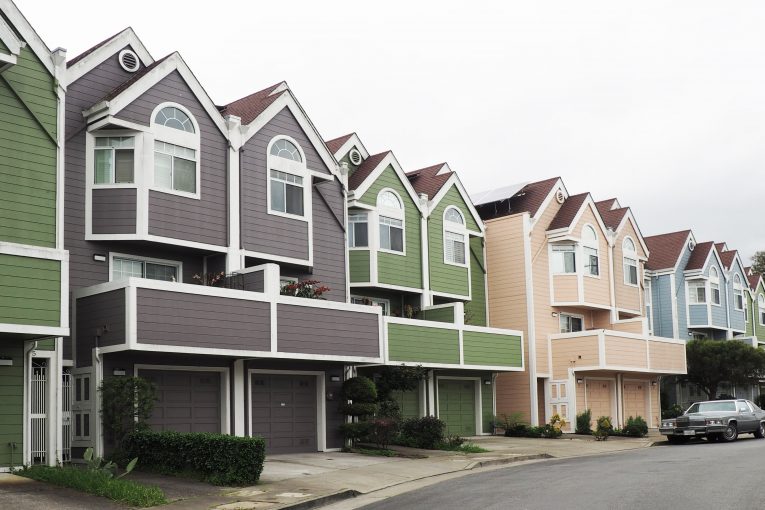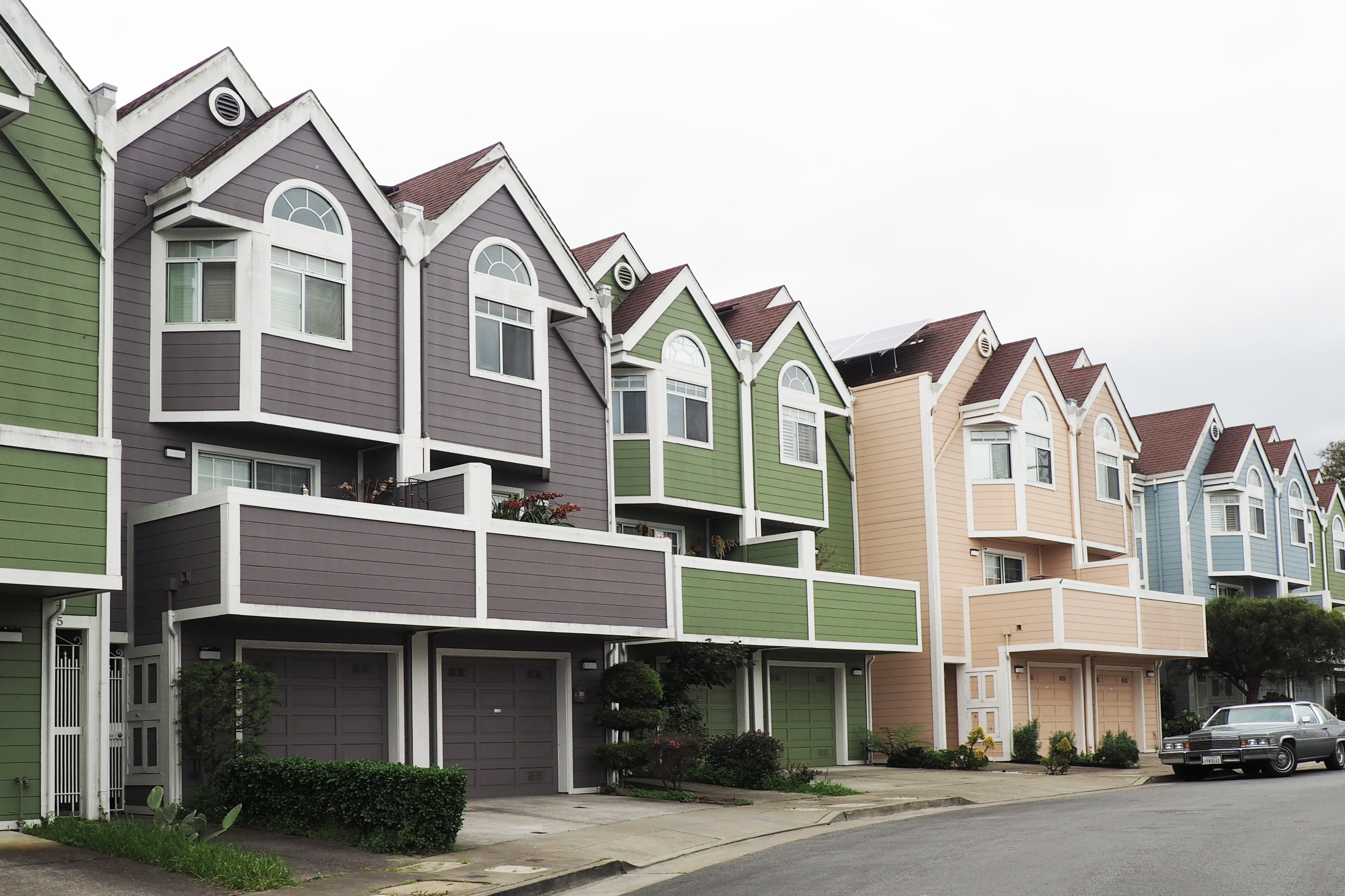

By David M. Greenwald
Executive Editor
Davis, CA – Davis City Council is slowly moving to put the first of potentially five Measure J projects on the ballot starting in 2025 with Village Farms. Listening to public comment, as I noted in Friday’s column, some in the public are already geared toward taking on Village Farms and citing concerns like traffic and density.
Would defeating Village Farms be sufficient to trigger action from the state to attempt to invalidate Measure J in the courts? It’s hard to know. It is possible for Davis to meet its current RHNA obligations through the 16 identified rezoning sites. (How likely it is for the city to get over 500 affordable housing units out of those sites is another question altogether).
What doesn’t seem possible is for the city to meet the next RHNA cycle’s housing needs without being able to rezone several of the peripheral sites—which must be approved by the voters in order to be rezoned.
If the city shows itself unable to meet state housing requirements, and it is deemed that Measure J is the proximate cause of that, it seems likely that there will be an attempt  to take out Measure J.
to take out Measure J.
In our view, there are four likely paths to legal challenge of Measure J.
- Legal Services Lawsuit
As reported in the Vanguard, Legal Services of Northern California wrote a letter to the city back in August demanding action.
In the letter they complain that growth management measures such as Measure J “is not adequately analyzed.”
They write, ““Housing Element Version 2 continues to conclude that Measure J is only a constraint if the City lacks sufficient infill sites. However, a constraint to housing development exists even when the City may be able to demonstrate sufficient sites to address the RHNA.”
They add, “the City currently lacks sufficient infill sites to meet its current housing need. This is proven by its 23.6 acre rezone obligation. Therefore, the City continues to have a duty to remove or further mitigate the impacts of this identified constraint.”
While the city has addressed this—at least on paper with the 16 sites—one could easily imagine Legal Services litigating if Measure J proves an ongoing barrier to affordable housing in Davis.
- California YIMBY
In August, YIMBY Law filed suit against Redondo Beach “for violating both state housing law denying a builder’s remedy project and their own city charter to deny needed housing.”
In February 2023, YIMBY Law, the legal arm of California YIMBY, filed at least 12 lawsuits against communities such as Belvedere, Burlingame, Cupertino, Daly City, Fairfax, Martinez, Novato, Palo Alto, Pinole, Pleasant Hill, Richmond and Santa Clara County.
“There’s no excuse for these cities to be in violation of state law,” said Sonja Trauss, YIMBY Law executive director, in a statement. “Cities have had years to plan for this. […] It’s time for them to be held accountable.”
If the time were ripe, would YIMBY Law file against one of the poster child growth control measures?
- California Department of Housing and Community Development (HCD) / AG Bonta
The state has become even more aggressive on this front than a lot of people anticipated. I keep warning that the state is coming—but people seem to repeatedly discount that.
The state has already sent that message—they have filed litigation in places like Elk Grove, San Bernardino, Huntington Beach, Coronado.
The gauntlet, however, is San Francisco.
“It is egregious, the enormous amount of constraints and barriers they impose on new housing development,” said Gustavo Velasquez, director of the state’s Department of Housing and Community Development. “The cost of housing is exorbitant because there isn’t enough of it.”
That’s a pretty strong statement that Velasquez made to the NY Times yesterday.
San Francisco is probably the worst. But Davis is vulnerable on Measure J. And Measure J has never been legally tested in court.
- A Local Developer Ends Up Suing
I have always kind of discounted this possibility because most of the local developers are repeat players—meaning they will likely have another project.
But that didn’t stop Taormino recently from filing on Builder’s Remedy.
Taormino is claiming that Davis is refusing “to process a housing development project in which 20% of the homes will be for low-income households.
“I really wish it would not have come to this,” said plaintiff and project developer David Taormino. “My only desire has been to build housing for people working in Davis and for young families in order to put kids back into our schools.”
The city has pushed back. In an October 13 letter, the city said it “disagrees” with the notion that they have “failed to process the Project as required under the Permit Streamlining Act and California Environmental Quality Act.”
What could be interesting is an argument from Attorney Matt Keasling who noted a second complaint would potentially be filed under Section 1983, arguing that the Council has violated Taormino’s constitutionally protected civil rights.
He argues that this constitutes “a regulatory taking of property rights without just compensation” and a “procedural due process violation stemming from among other thing, bias” and he alleges “retaliatory conduct by the City serving no legitimate governmental function.”
That could be a basis for a challenge to Measure J from a private entity. The question is who would be the one to file it? Of the four possibilities, this one at least right now seems least likely.







There is a fundamental flaw with this argument. Housing Element Law does not cross jurisdictional boundaries. It applies to the land that is within an individual jurisdiction’s boundaries.
Although I personally do not agree that the City lacks sufficient infill sites, the real fatal flaw of this argument is in the second sentence, where the same cross jurisdictional issue exists. The City does not have the authority to rezone County land.
Taormino did not file suit against Measure J, but rather against the City’s decision not to process his application in a timely fashion under the provisions of Builders Remedy.
Bottom-line, filing a lawsuit against Davis and/or Yolo County is going to be a much more difficult and risky undertaking than filing against Belvedere, Burlingame, Coronado, Cupertino, Daly City, Elk Grove, Fairfax, Huntington Beach,Martinez, Novato, Palo Alto, Pinole, Pleasant Hill, Richmond, San Bernardino, San Francisco and Santa Clara County.
Here too there is a fatal flaw in the argument. In the case of all of those listed jurisdictions YIMBY filed suit because the respective jurisdiction failed to comply with the provisions of the state law in processing applications within the boundaries of the jurisdiction. To the best of my knowledge, Davis has not violated any state law provisions within the City Limit boundaries.
Here too the boundary issue raises its head. HCD can indeed come after the City for constraints and barriers within its own boundaries, but would have to go after Yolo County for constrains and barriers on County land.
“ The City does not have the authority to rezone County land.”
There is a process by which the city can annex and rezone county land.
Under current law, only if the landowner requests it, with limited exceptions. Now, if the law were modified to allow annexation at the request of the city…
Right now there are four properties requesting to be rezoned for housing and annexed into the city. Palomino Place is already in the city and only needs to be rezoned which currently requires a Measure J vote.
David, you are missing Jim’s point. Those landowners aren’t asking for a simple unconditional annexation, but rather for a conditional annexation that only moves forward if their development proposal is approved. The LAFCO rules for annexation are really very clear, and the landowners so far have chosen not to avail themselves of the unconditional annexation opportunity.
Yeah but I don’t understand why that point matters for this discussion?
The point of the article is to note that in order for the city to rezone peripheral land, it has to go through a Measure J process – that includes an application from the developer and approval by the county. Not sure why you are attempting to bring in a bunch of tangential issues here.
Your point is biased and narrow, which is the prerogative of the publisher/editor. Jim and I are simply pointing out that narrowness. As the law exists, all of the parties you listed as potential suit filers face the same problem … the land is in the County, so no City “constraints” apply directly to the land as it currently exists … in County jurisdiction.
The land owners have the ability to change that, but they have thus far been unwilling to do that. No how much rhetoric you throw at it, that is not a failing on the part of the City. The blame falls elsewhere.
Maybe, but that’s not how the lawyers I have spoken to understand this issue.
Due to the County restrictions on development that require that those now be done by the city which has a sphere of influence covering the parcels in question, the land cannot be developed by bypassing Measure J/R/D due to City of Davis restrictions on acquisition and rezoning. That’s why we don’t ever see proposals going that route. It’s part of the countywide agricultural land preservation policy that’s been in place for decades. Even if annexed unconditionally, the land still would have to go through the Measure J/R/D vote to be rezoned from agricultural. And that leaves the developers in the same place regardless of which path they choose, still facing a voter referendum which inhibits development potential.
Palomino Place is a case in point–inside City limits but requiring a Measure J/R/D vote to be rezoned: https://www.cityofdavis.org/city-hall/community-development-and-sustainability/development-projects/palomino-place
Richard, those are not restrictions. They are General Plan goals.
The Pass Through Agreement terms can absolutely be bypassed by the County. That simply takes a discretionary decision by the Supervisors.
If annexed, then HCD and the other possible plaintiffs david listed would be able to pursue their suits because the land would be undeer the City’s jurisdiction. Currently the City has no jurisdictional authority over that land.
Richard, Palomino Place is indeed a case in point; however, Dave taormino has chosen to file suit not vis-a-vis measure J, but rather on Builders Remedy, which he believes exempts his proposal from a Measure J vote.
I could be wrong, but the lawsuit argues that the city is required to process the application, not that the project is exempt from Measure J.
David, that is not what Dave Taormino told me when the two of us talked about the pending lawsuit the weekend prior to his filing. You are correct that his principal complaint is that they are not processing his application at all, but a key component of his legal assertion is that by complying with the State’s Builder’s Remedy provisions the rezoning is automatic, and the provisions of Measure J do not apply to land that is already zoned for urban use … only to land that is zoned for agricultural use.
Matt –
Obviously I have no idea what he told you. All I can do is go by what they filed which doesn’t make that argument.
Verified Writ_Palomino 092523-1
David, he doesn’t have to make that argument in a failure to process lawsuit.
With that said, he may be incorrect in what he tole me he believes. However, it does make some logical sense that if the State Law overrides the local law vis-a-vis the zoning change and the zoning is changed without legislative involvement, then the conditions mandating a Measure J vote are no longer in place.
David, I did a quick read of the Writ and nowhere in it is Measure J mentioned/cited/referenced.
Further Section 81 of the Writ states the following, “Petitioners assert that the approval of a Builder’s Remedy project is adjudicatory rather than legislative since the processing of a tentative subdivision map, site plan review and a preliminary grading, drainage and utility design al entail the application of existing rules to a specific set of facts; the Project does not require the Council to exercise its legislative function.”
That is pretty clear.